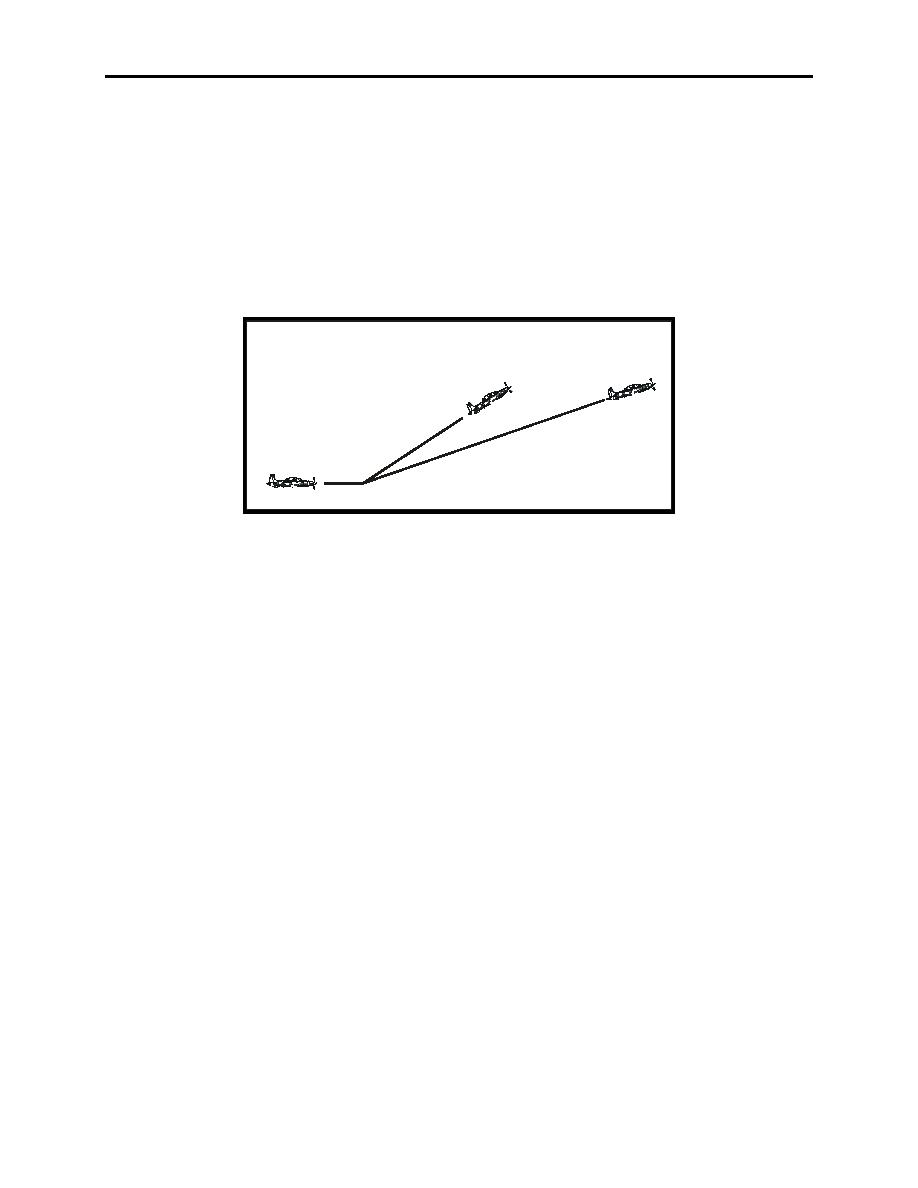 |
|||
|
|
|||
|
|
|||
| ||||||||||
|
|  CHAPTER FIVE
T-6A CONTACT
the takeoff roll. Coordinate right rudder as necessary with TAD adjustments during rotation.
Compensate for the left yaw tendency as the aircraft leaves the runway with rudder not aileron.
As you move to the initial climb phase of the takeoff, check pitch attitude at seven to eight degrees
nose high and begin accelerating. The aircraft will pick up speed rapidly after becoming airborne.
Once a positive climb is verified and a safe landing cannot be made on the remaining runway in
front of you, raise the gear and flaps (as per After Takeoff Checklist and the procedures below).
Continue acceleration and upon reaching climb speed, set pitch at approximately 8 nose high and
continue climb at 180 KIAS.
Best Rate
Normal Rate
140 KIAS
180 KIAS
Figure 5-2 Climb Rate
NOTE
More efficient climbs may be required for obstacle clearance or
specific requirements. The T-6A best rate of climb speed is
140 KIAS and 15 nose high. Figure 5-2
Since power during the initial climb is fixed at maximum, airspeed must be controlled with slight
pitch adjustments. However, do not stare at the airspeed indicator when making these slight
pitch changes; crosscheck airspeed to confirm the correct pitch picture in relation to the horizon
is set.
For takeoff in crosswind conditions, the aircraft will tend to weather-vane into the wind and the
upwind wing will begin to rise even in light-to-moderate crosswinds. This tendency can be
controlled with rudder and aileron. Maintain positive aileron deflection into the wind once in
position for takeoff and maintain this crosswind control throughout the maneuver. Use up to full
aileron deflection into the wind at the beginning of the takeoff roll, and relax aileron input as
speed increases to the amount required to keep wings level at liftoff. Use rudder as necessary to
maintain centerline. Realize that a left crosswind will add to the aircraft's left yawing tendency
due to engine torque effect requiring even more right rudder to maintain directional control.
Once the aircraft has safely left the runway in controlled flight, level the wings, allow the aircraft
to crab into the wind, and check balanced ball centered.
5-4
FLIGHT PROCEDURES
|
|
Privacy Statement - Press Release - Copyright Information. - Contact Us |